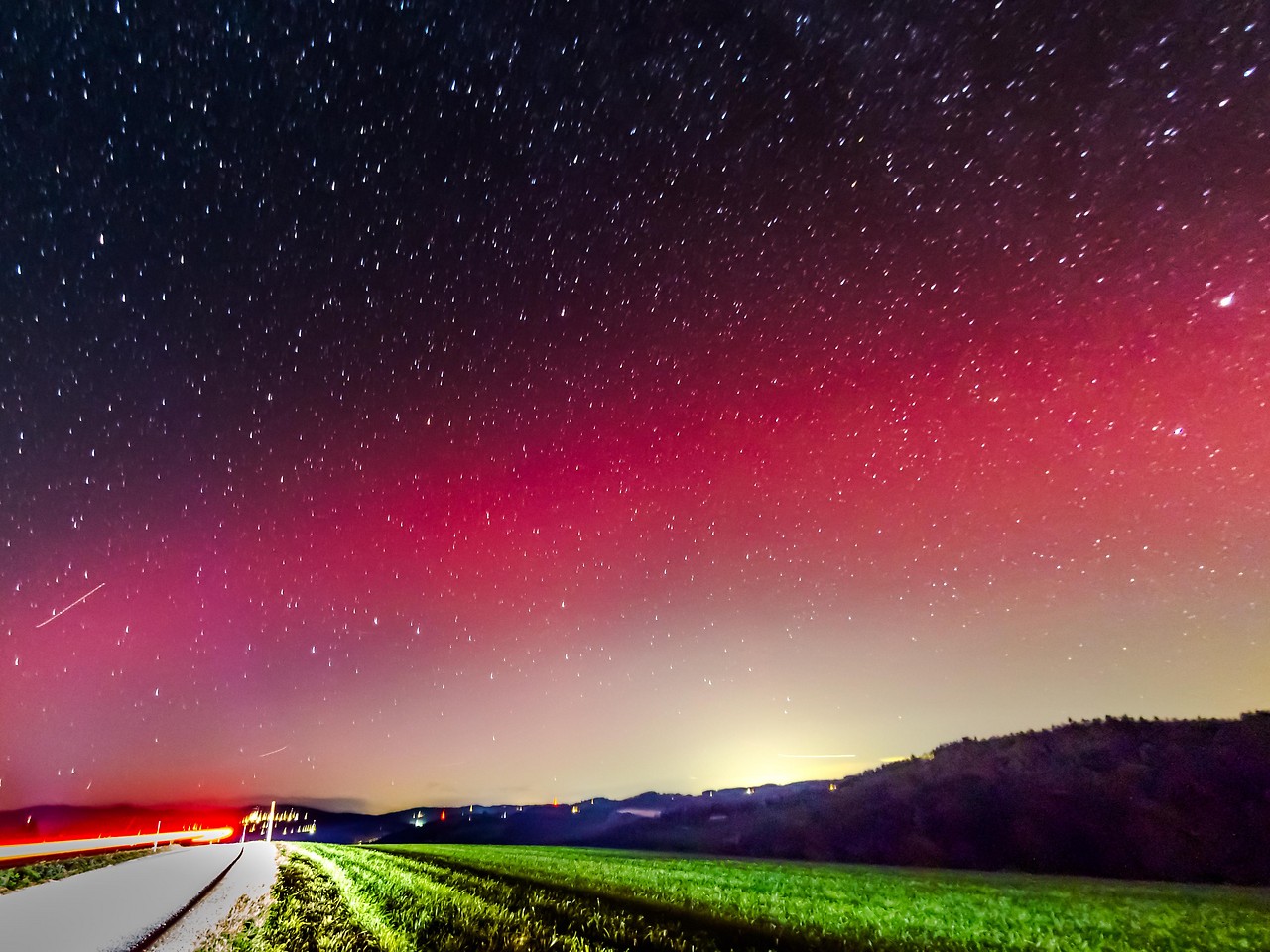The celestial spectacle is powered by solar storms. According to Hans Eichelberger of the Institute for Space Research in Graz, the Sun has an eleven-year cycle in which it is most active, and we are currently at the beginning of one.
“We have turbulent conditions on the Sun, and when the solar wind and its magnetic field hit the Earth, that magnetic field and these particles interact with the Earth’s magnetic field – these particles are accelerated there, and then these accelerated particles collide with the upper layers of the atmosphere releasing energy there, and this leads to Luminous phenomena.”
The last time the northern lights were clearly seen was 20 years ago
According to Christian Mostl, head of the Austrian Space Weather Office – the space weather branch of Geosphere Austria in Graz – confirms that such flares occur very rarely: “There has been a very long lull. There was actually something going on in April, but the northern lights were visible around 3am. However, before that, the Sun was actually fairly inactive, meaning there were fewer solar storms, which were also not as powerful. The last time I saw the aurora well was 20 years ago.

This year, several solar storms hit the Earth, and the chances of seeing more northern lights in Austria are still good in the next few years, according to the expert: “There will definitely be such events again in the next three to four years, because the magnetic activity in the field “The solar is increasing right now – that means: until 2025 and even after that, there may always be days like this – but a lot of things have to come together.” Predicting the Northern Lights is difficult, says Mostel, but we’re working on it.
The effects in this country are unlikely
Space researcher Martin Fulwerk explains that this could also have an effect, because additional magnetic currents affect the power grid: “The Earth’s magnetic field is moving, and if you have a conductor, like a power cable, an additional current can be generated in the cable; An autotransformer, like in North America and Canada, it burns out and then you can have a known power outage.
Therefore, satellites in the atmosphere are switched to standby mode. However, the probability of something happening in Styria is very low.

“Total coffee aficionado. Travel buff. Music ninja. Bacon nerd. Beeraholic.”








More Stories
Coral Seeding: Artificial Insemination Makes Coral More Heat Tolerant
Fear, Anger, and Denial: How People Respond to Climate Change – Research
LKH Graz: Using radiation to combat heart arrhythmias